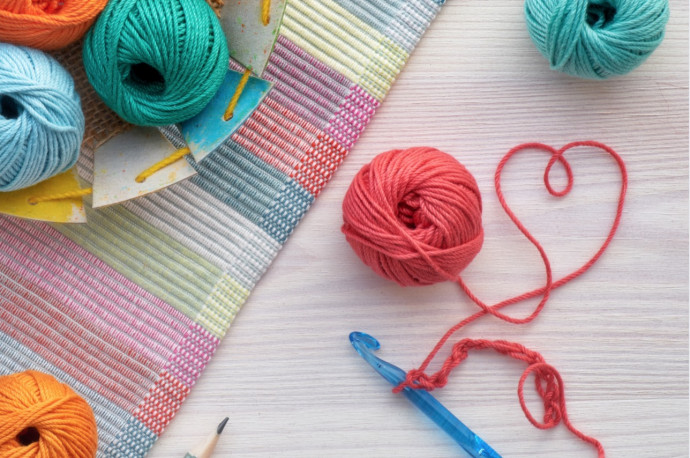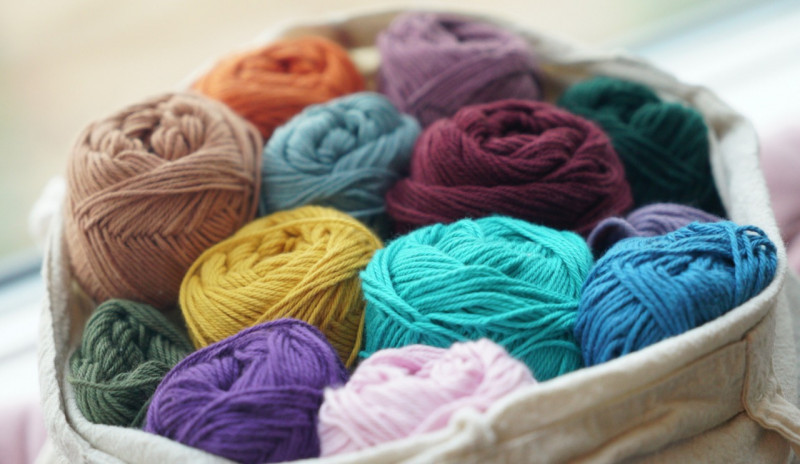Crochet Q&A: Yarn Substitutions

Hello, my dear crocheters! I keep answering some of the most common questions you have and to anticipate some questions you didn’t know you had. Today I invite you to learn some general rules and recommendations regarding yarn substitutions. I hope that this information will lead you down the road to gaining the confidence needed for good crocheting.

1. Can I use a different yarn than the pattern calls for?
Yes, but you’ll need to use a yarn similar to the one the pattern calls for to get similar results. Because of their unique properties, novelty yarns may be tricky to substitute in a pattern, but ordinary yarns can often be substituted quite successfully.
2. How do I find a substitute yarn?
Try these suggestions for evaluating a substitute.
Compare data about the yarns. Start by noting what you know about the original yarn. What weight is it? What gauge does the pattern call for? What is the suggested hook size? Then, look at the yarn you’d like to substitute and make sure it is the same weight as the original yarn. (Remember, this refers not to how much the packaged yarn weighs but rather the weight classification.) The yarn band gives you the suggested gauge and hook size for the new yarn; you should be able to crochet the new yarn to the same gauge as stated in your pattern.
Consider other characteristics of the original yarn. What is the fiber content? Is it a plain yarn? Fuzzy? Smooth? Bumpy? Stiff? Tightly or loosely spun? A loosely spun yarn or a single-ply yarn will look different from a yarn with a tighter twist or multiple plies, even if they are the same weight. You should be able to determine these characteristics from the description in the pattern or from some online research.
Consider the characteristics of the item you are going to make. Is there lots of textured patterning that would not show up well with a variegated or slubby yarn? Is it a lacy item that works best with a natural fiber that can be properly blocked?
Buy a single ball of the new yarn, if possible, and swatch with it to ensure you are happy with the results. You may not mind if the substitute yarn is not exactly the same as the original, but it’s best to make informed choices. If you are unsure, check with a knowledgeable sales clerk where you buy your yarn.
3. My pattern calls for 3-ply wool. Will any 3-ply wool be sufficient?
Not necessarily. In the past, yarns were often categorized according to the number of plies. This worked because there were a limited number of commercially available yarns, and everyone understood a 3-ply yarn to be of a certain diameter. These days, it is not sufficient to describe yarns by ply alone, as some multi-ply yarns are very fine and some singles are ultra bulky. You’ll need to determine the weight classification of the original yarn and choose an appropriate substitute.
4. Can I buy yarn by weight?
If you’re referring to its weight classification, then the answer is, “Probably.” If you mean you want to figure the amount of yarn you need to buy based on how much each skein weighs, then the answer is, “Bad idea.” Buying by skein weight is another holdover from the past, when most yarns were wool and of a fairly uniform size. Length (yardage) is what matters, not how much the yarn weighs. Cotton yarn weighs more per yard than wool; some wools weigh more per yard than others. If yardage is not listed on the ball band, see if you can determine it from the Internet or other sources so that you buy sufficient yardage for your project.
5. Can I use two lighter weight yarns together to make a heavier yarn?
Yes, but you’ll have to work a gauge swatch to see if you can get the correct gauge. To get off on the right foot, try using this rule of thumb: Add the suggested gauge of each of the two yarns and divide by 3 for the suggested gauge of the two yarns held together.
For example: Using two strands of sport-weight yarn with a suggested gauge of 4 sc = 1", double the gauge of the yarn and divide by 3:
(4 × 2) ÷ 3 = 2.67 sc = 1"
If the gauge you are expecting to use is in the ballpark of 2.5 sc = 1", then you might be able to use those two strands of sport-weight yarn together. Don’t forget that you’ll need a larger hook than you would for a single strand of sport-weight yarn. You’ll probably start with the hook size listed in the pattern instructions. Swatch with your proposed yarn and hook to see how close you are. If you are using a yarn doubled, remember that you’ll also have to double the amount of yardage called for in the pattern!
6. If I’m substituting yarn, how much do I buy?
Figure out how much yardage you need by multiplying the number of skeins the pattern calls for by the number of yards or meters per skein of the original yarn. You should be able to find this information in the pattern instructions. Once you know the total length you need for your project, divide that number by the number of yards or meters per skein in the yarn you want to use. You’ll probably get a fraction. Be sure to round up since you cannot buy a fraction of a ball of yarn. For example: My pattern calls for 8 skeins of Pretty Yarn (100% acrylic, 200 yds/100 g). I want to use Beautiful Yarn (100% wool, 240 yds/4 oz) instead. Here’s the math:
8 skeins × 200 yards = 1600 yards
1600 yards ÷ 240 yards = 6.67, or 7 balls
You may want to buy one additional ball for safety’s sake. Remember, you’ll be using up yarn making a good-size swatch.
Be sure you are using consistent units of measure (yards or meters). If one yarn is labeled in meters and one in yards, you’ll need to convert the meters to yards or vice versa before calculating how much yarn you need. It’s not as important as it is in rocket science, but differing units can trip you up.
